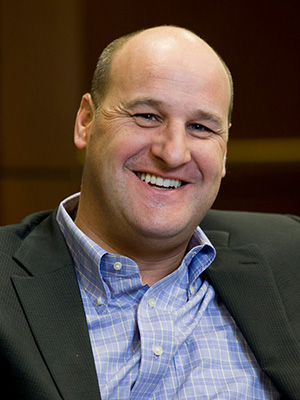Bryan Pearson is the former CEO of LoyaltyOne, which runs the Air Miles program in Canada, and a best-selling author and speaker on the subject of loyalty marketing.
Canadians do love their loyalty programs. They not only belong to more than a dozen different programs on average, they are amongst the most active participants in the world, according to a KPMG study last year. That study found that 56% of Canadians earn program rewards at least several times a week. Some of these programs are mammoth in size: the PC Optimum loyalty program has 16 million members – Air Miles has 11 million – Aeroplan has 5 million. Today just about every retailer, grocer, gas station operator, quick serve restaurant, and hotel offers some kind of loyalty program.
People just want to save money, it seems, whether that comes in the form of redeemable points, instant discounts, cash back, or other monetary prizes and incentives. But does that make them “loyal” to the company – or to the program? That question has dogged the loyalty business ever since the advent of frequent flier programs in the 1980s which were designed as “barriers to exit” – a way to discourage people from switching airlines. And that is largely how most loyalty programs operate today, driving repeat sales through “this for that” reward schemes. The term loyalty is really a misnomer, mistaken for what it actually means: sacrificing a bit of margin to win repeat business. In other words, a promotional ploy.
Most people admit these programs do little to make them feel more loyal – especially since most are merely variations on the “earn and burn” concept. They see them as “savings” programs, not “loyalty” programs. The benefit to the loyalty program operator is easy to see – the capability to track and influence individual buying behaviour; for members, however, the program experience is purely transactional. Nothing about it makes them feel special or appreciated – more a contractual commitment than an expression of gratitude for their business.
That’s why loyalty programs are long overdue for reinvention. They should show greater appreciation to customers. They should foster a more intimate relationship based on known needs and behaviour. They should treat customers as valued members of a community. They should feel like a natural extension of the brand experience. But that means marketers must stop thinking of them as “loyalty programs”. Instead they need to be rebooted as “customer programs”, designed to humanize the brand experience.
As the former CEO of LoyaltyOne, which operates the Air Miles program, Bryan Pearson is a passionate believer in the need to reimagine loyalty marketing. He was an early pioneer in the growth of coalition loyalty programs, which became highly popular in Canada because of the opportunity for “collectors” to earn rewards faster through a wide network of sponsors.
Hired by Air Miles when it first began in 1992, Bryan rose through the ranks to lead the 1,500 person company until he parted ways last August in a surprise departure. Under his 12-year stewardship, LoyaltyOne became highly proficient at converting the massive amount of purchase data it had amassed on two thirds of Canadian households into valuable marketing insights for sponsors.
Today Bryan is a popular keynote speaker on the conference circuit, sharing his ideas on how to transform loyalty marketing. I started our interview by asking him whether he had any inkling when he was first hired by Air Miles that it would take off so quickly with so many Canadians.
Bryan Pearson: The outcome of Air Miles and how big it has become far exceeded any of our wildest imaginations. And I think we really saw that in the late ’90s when we started to get grocery penetration across the country, and really the program just took off at that point. But at the end of the day, not only did the business exceed the wildest expectations, but I think what we’ve been able to do for our clients in recognizing the full potential of what we created, you know, it’s reached way beyond the initial intent, which was really a promotional tool. And yet, we’re still a long way from what’s possible, which is kind of the exciting piece still.
Stephen Shaw: Right. Well, it was foundational what you did. I mean, you were creating a new mindset around the use of data, frankly, at the time. And you were in the vanguard of a movement that was just getting momentum at the time.
